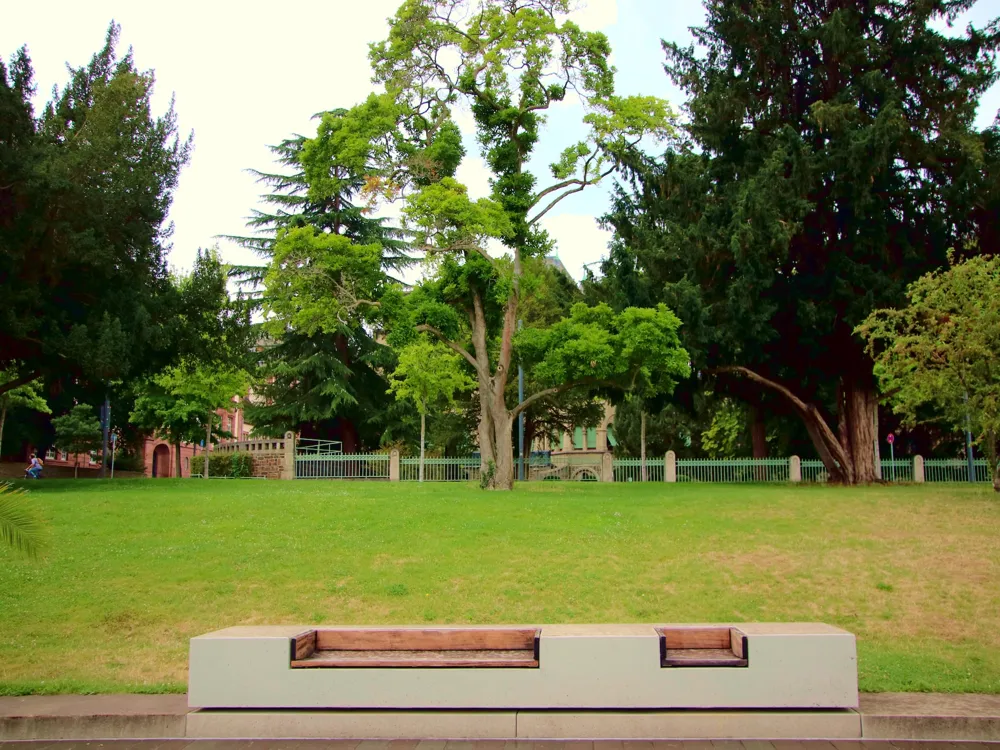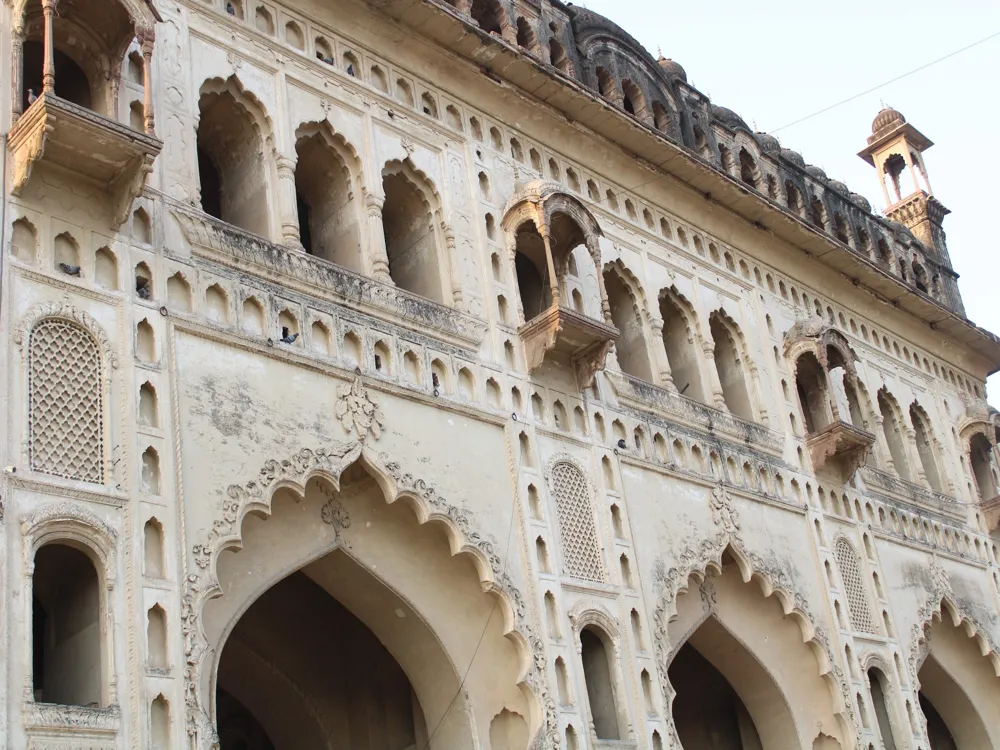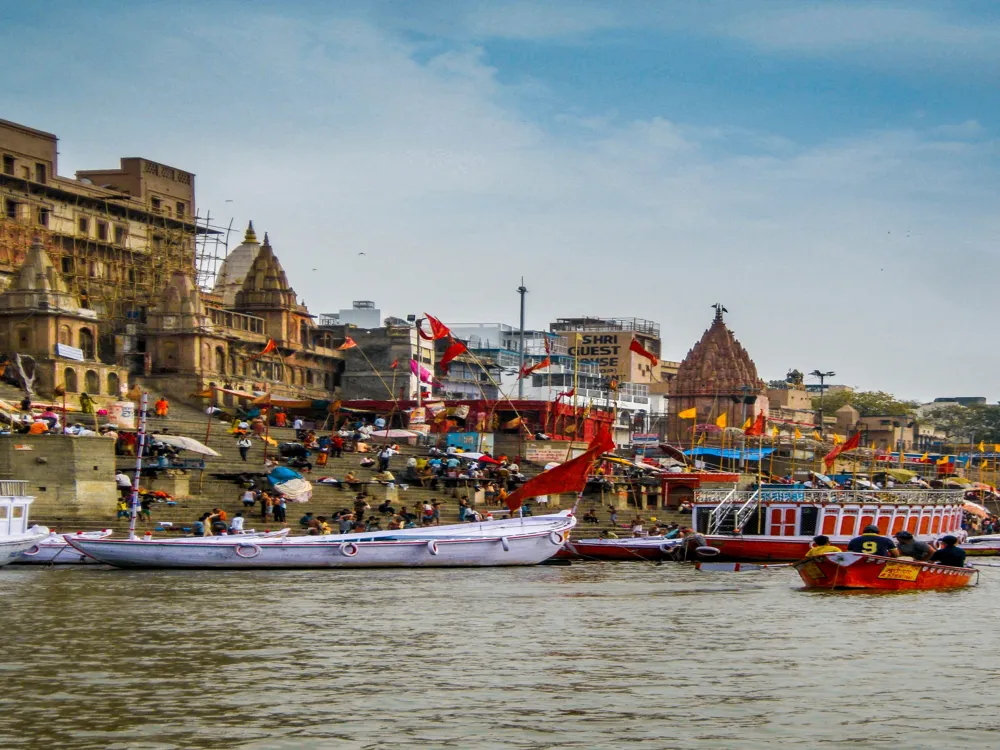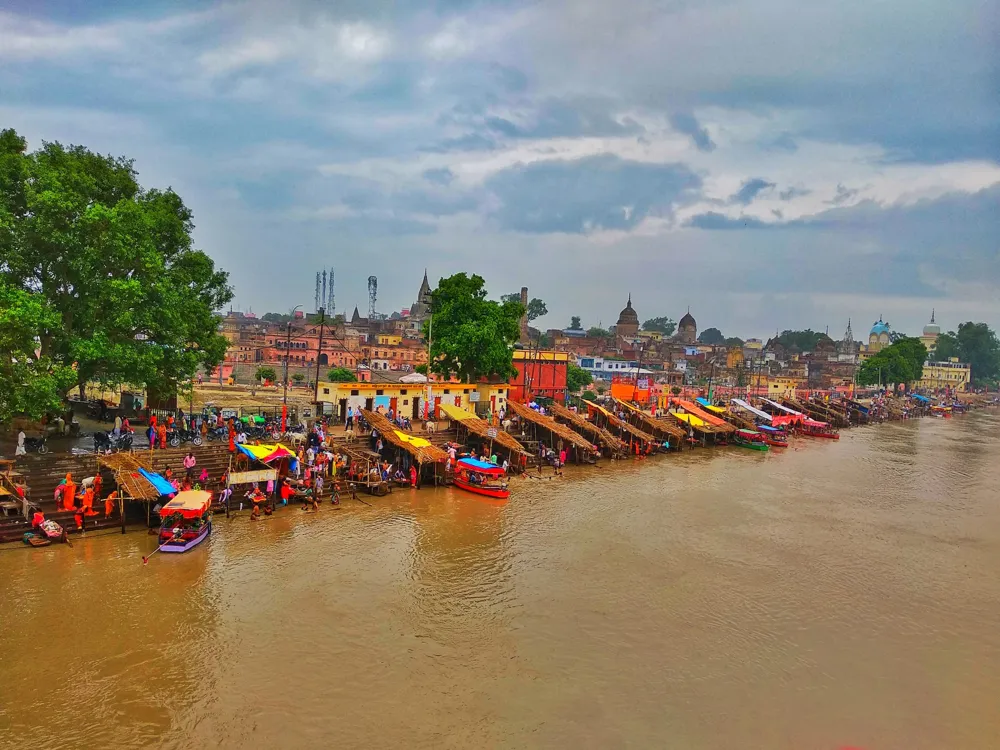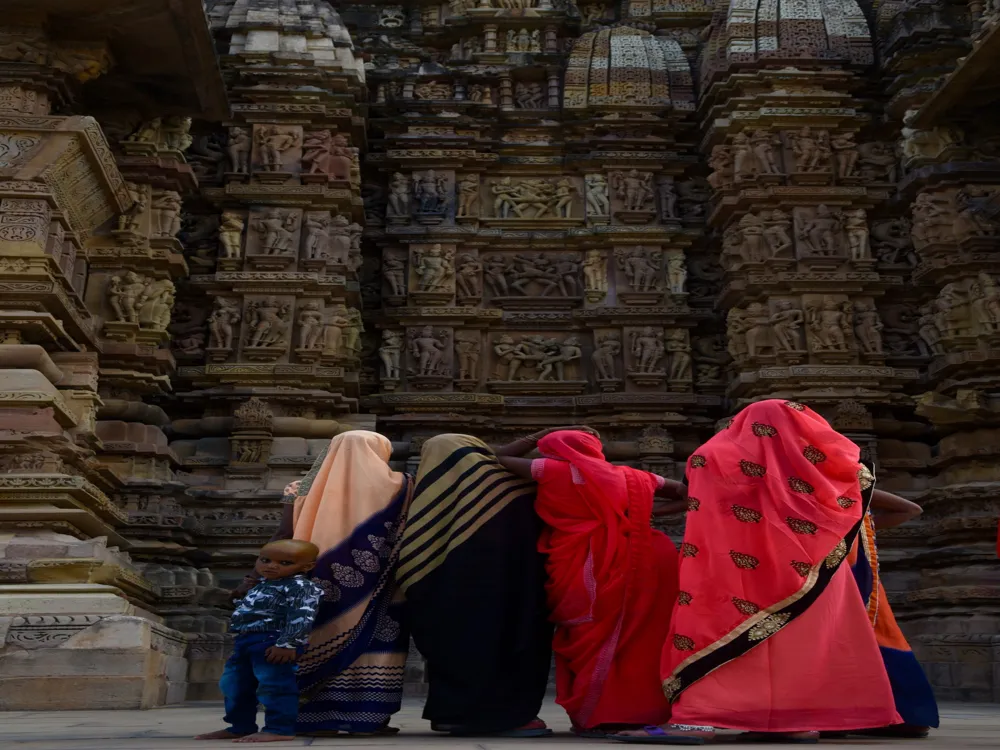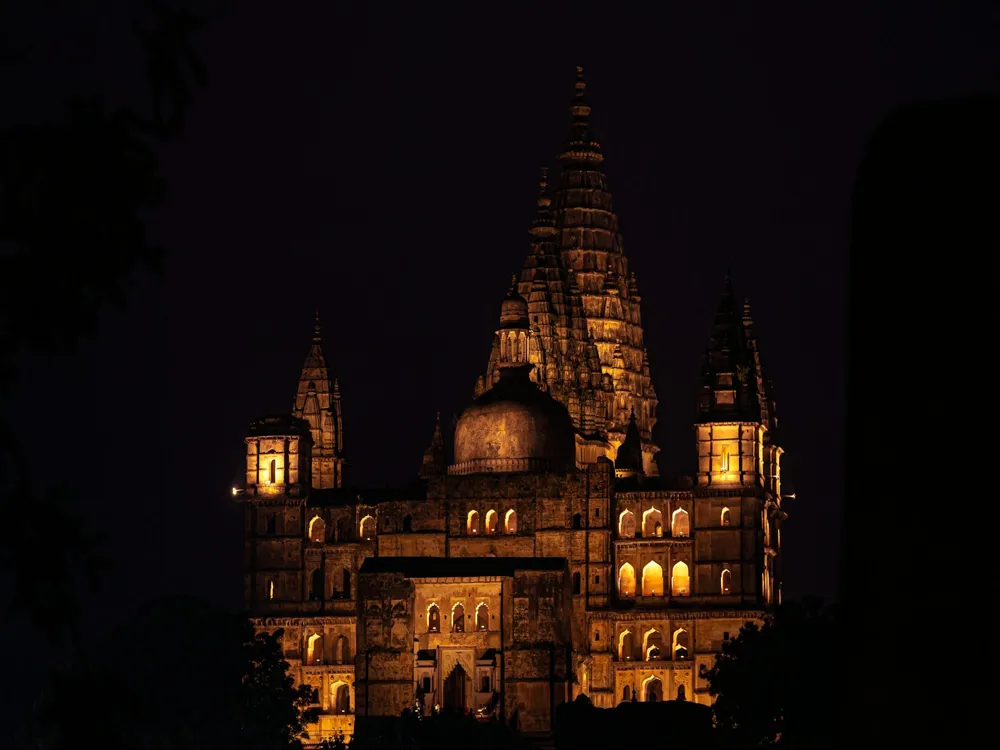The Chota Imambara, also known as Hussainabad Imambara, is a stunning monument located in the city of Lucknow, Uttar Pradesh, India. Built in 1838 by Nawab Muhammad Ali Shah, it serves as a mausoleum for the Nawab and his mother. Renowned for its exquisite architecture and intricate decorations, this historical edifice is an embodiment of Awadhi culture and heritage, making it a significant tourist attraction. The Chota Imambara stands out for its unique architectural style, which is a blend of Indo-Islamic and Persian elements. The exterior is adorned with Quranic calligraphy, while the interior is resplendent with elaborate chandeliers and mirrors, which were imported from Belgium. The central hall, which houses the tomb of the Nawab, is a visual masterpiece, with its walls decorated with Arabic verses crafted in fine calligraphy. It's recommended to visit the Chota Imambara during the cooler months from October to March. The site is usually less crowded in the mornings, providing a more peaceful experience. Visitors are advised to dress modestly as the Chota Imambara is a place of religious significance. Covering your head is not mandatory, but is considered respectful. Photography is allowed inside the Imambara, but it's essential to be respectful of the place and avoid disturbing other visitors. Using flash photography is usually discouraged inside the main hall. Chota Imambara is well-connected and easily accessible from various parts of Lucknow. Visitors can opt for local buses, auto-rickshaws, or taxis to reach this historic site. The nearest railway station is the Lucknow Junction, which is approximately 4 km away. For those traveling by air, Chaudhary Charan Singh International Airport is around 15 km from the Imambara. Read More:Overview of Chota Imambara
Architecture of Chota Imambara
Tips When Visiting Chota Imambara
Plan Your Visit
Dress Appropriately
Photography Guidelines
How To Reach Chota Imambara
Chota Imambara
Lucknow
Uttar Pradesh
₹ 9,999 onwards
View lucknow Packages
Weather :
Label : Must Visit
Tags : Historical Site
Timings : 6:00 AM - 5:00 PM
Time Required : 2-3 hrs
Entry Fee : Indians: INR 25,
Foreign Nationals: INR 300
Built In : 1838
Constructed By : Muhammad Ali Shah, the Nawab of Awadh
Planning a Trip? Ask Your Question
Also Refered As:
Imambara Hussainabad Mubarak
Lucknow Travel Packages
View All Packages For Lucknow
Top Hotel Collections for Lucknow

Private Pool

Luxury Hotels

5-Star Hotels

Pet Friendly
Top Hotels Near Lucknow
Other Top Ranking Places In Lucknow
View All Places To Visit In lucknow
View lucknow Packages
Weather :
Label : Must Visit
Tags : Historical Site
Timings : 6:00 AM - 5:00 PM
Time Required : 2-3 hrs
Entry Fee : Indians: INR 25,
Foreign Nationals: INR 300
Built In : 1838
Constructed By : Muhammad Ali Shah, the Nawab of Awadh
Planning a Trip? Ask Your Question
Also Refered As:
Imambara Hussainabad Mubarak
Lucknow Travel Packages
View All Packages For Lucknow
Top Hotel Collections for Lucknow

Private Pool

Luxury Hotels

5-Star Hotels

Pet Friendly








